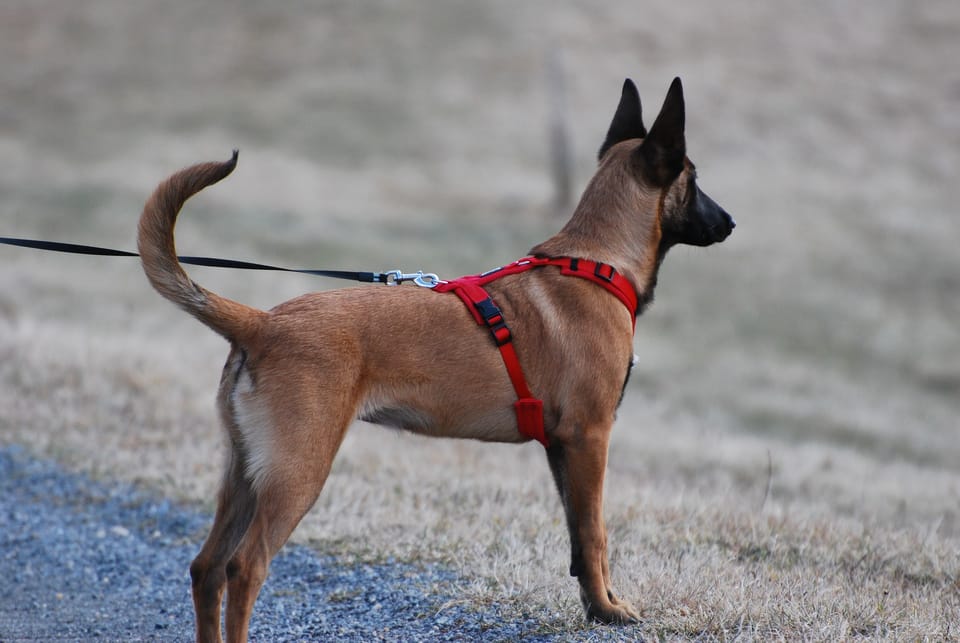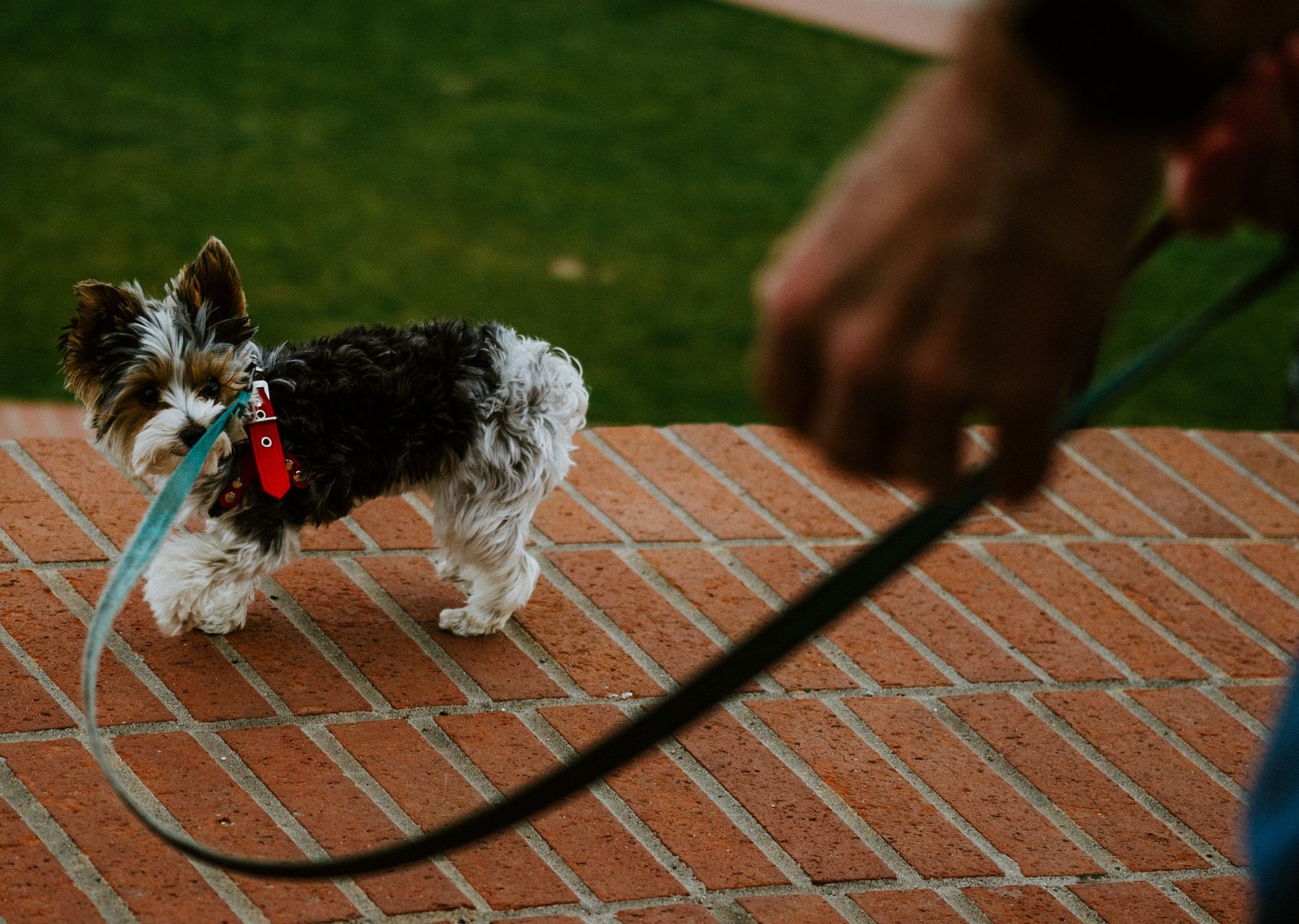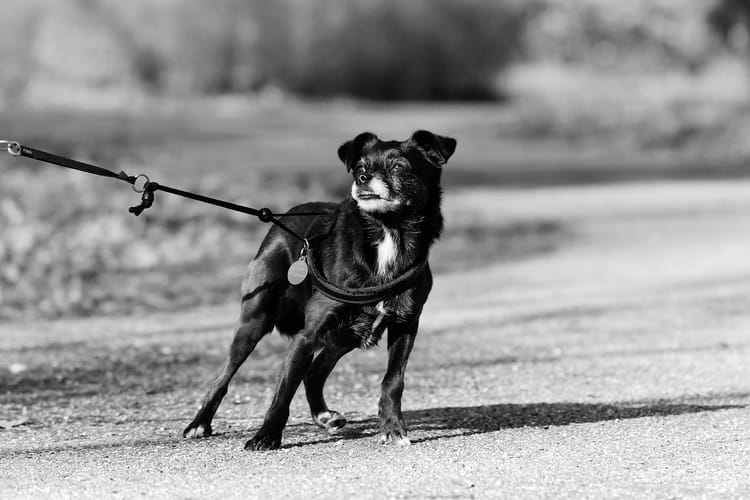Management for reactive dogs: How to keep your dog safe and under control on walks

If your dog is reactive to other dogs or people when out on a walk, you know how frustrating and embarrassing it can be. Not only is this behavior stressful for you and your dog, but it can also be dangerous if your dog starts barking or lunging.
In this post, we will discuss some professional tips and tricks for managing and controlling reactive dogs. We will also provide some basic steps to training a dog to stop leash-reactive behavior. If you're struggling with your reactive dog's behavior or worried about your dog injuring themselves, you, or others, reach out to a professional behavior consultant for help.
- Practice your leash handling skills. To change the way your dog behaves on walks, first practice your leash handling skills at home, in a quiet location away from distractions. Start by holding the leash in your left hand and have a treat in your right. As soon as your dog looks at you or makes any effort to follow the treat, give it to them and praise them. Once they are consistently following the treat, start adding distance between you and your dog before rewarding them for good behavior. Practice making u-turns, walking backwards, and recall. When you're ready to practice leash handling on walks, take along your dog's top three favorite treats.
- Stay aware of your surroundings. Keep an eye on your surroundings and try to spot potential triggers before your dog does. When you see something that might upset your dog, use your leash handling skills to get your dog's attention and walk the other way. You can also look for visual and physical barriers like parked cars, building corners and doorways, or trees and bushes to put a barrier between your dog and the other dog or person.
- Use distance to keep your dog focused on you. Many times a reactive dog won't respond to treats alone, especially in the presence of other dogs. When you are out on walks, plan your route so you can physically distance yourself from your dog's typical triggers. This may mean choosing a different time of day to walk, taking a different route, or making your walks shorter and planning other mentally and physically stimulating activities for your dog. Use distance to your advantage. When you see a potential trigger, put some space between you and the dog or person. This will help your dog stay calm and avoid getting reactive.
- Reward calm behavior. If your dog spots another dog or person and is far enough away to take a treat, feed and then drop more treats on the ground in front of you. If your dog isn't interested in the food, create more distance. If your dog reacts, make a note about how close they were to the trigger and use that information to keep a workable distance the next time. Move away from the trigger each and every time your dog starts to bark. This will help your dog calm down instead of staying excited by the sight of other dogs or people. When your dog is calm, feed several treats in rapid succession. This will help reinforce the behaviors you want to see from your dog when on walks.
- Never punish your reactive dog. Dog training with verbal corrections, leash jerks, or electronic collars does not teach your dog how to behave calmly around other dogs. These things can make the problem worse. Your dog may start to see the other dog as a source of anxiety or pain, despite your intentions. Instead, walk calmly away from the other dog and find a spot where your dog feels good enough to practice a few leash-walking skills or basic obedience cues. Give your dog plenty of treats and happy praise when he does.
Working with a reactive dog can be difficult. It sometimes feels hard to know where and when they might react. One way I’ve found to make a training plan is to ask myself before every outing with a reactive pup whether I feel as though we will have enough control in that environment to succeed.
If not, plan a different walking route, or continue to work on leash handling skills in a less challenging location. If you're having trouble with your reactive dog's actions or are concerned about your dog hurting themselves, other people, or yourself, get in touch with a professional behavior consultant.

Join today to access the Basic Manners course.
Interested in learning more about professional dog training? Subscribe if you want more content like this delivered straight to your inbox!





